Sales Funnel Management: Definition, Stages, & Tips
Casey O'Connor
A sales funnel is a visual representation of the stages a buyer goes through in their journey to becoming a customer.
Sales funnel management is the practice of monitoring, analyzing, and optimizing the sales funnel as needed on a regular basis.
In this article, we’ll go over everything you need to know about sales funnel management, including why it’s so important, and how to build a sales funnel management plan for your own sales organization.
Here’s what we’ll cover:
- What Is Sales Funnel Management?
- Benefits of Sales Funnel Management
- The Stages of Sales Funnel Management
- Build a Sales Funnel Management Plan
What is Sales Funnel Management?
A sales funnel represents the thought process and decision points a customer goes through on their way to becoming a customer.
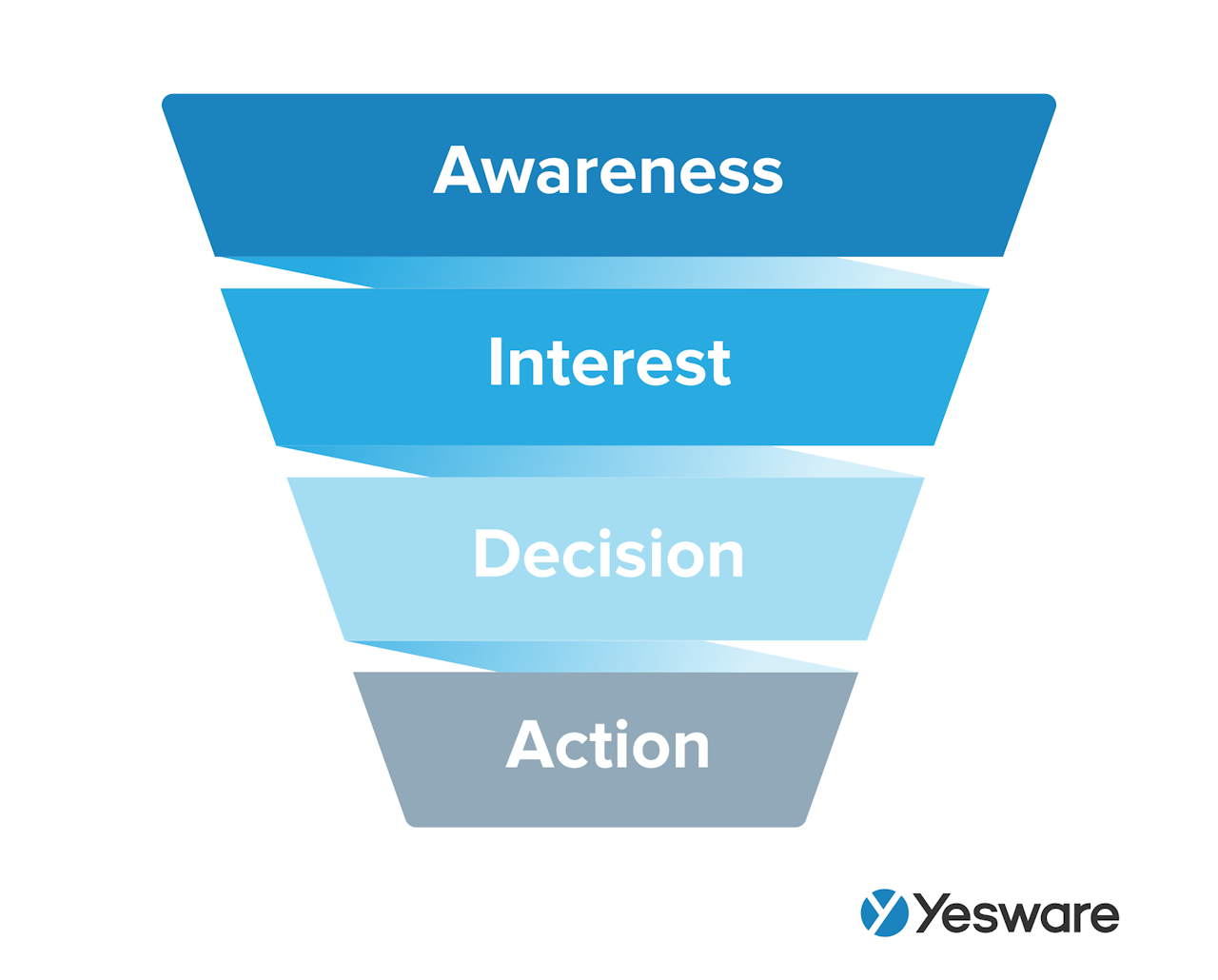
The sales funnel can help marketing and sales teams understand the thoughts and behaviors of potential customers.
Sales funnel management refers to the process of organizing, tracking, and prioritizing the various interactions happening simultaneously within the sales funnel.
It’s worth noting here that the word “funnel” is something of a misnomer; customers don’t usually funnel as neatly through the process as the image above makes it seem. Today’s sales process is rarely linear.
That’s why it’s so important for sales organizations to have a strong sales funnel management system. Sales funnel management helps marketing and sales teams track, qualify, and prioritize leads based on how engaged they are with your brand, and how likely they are to buy from you in the near future.
Sales funnel management also helps salespeople understand how to best target prospects at various stages of the funnel.
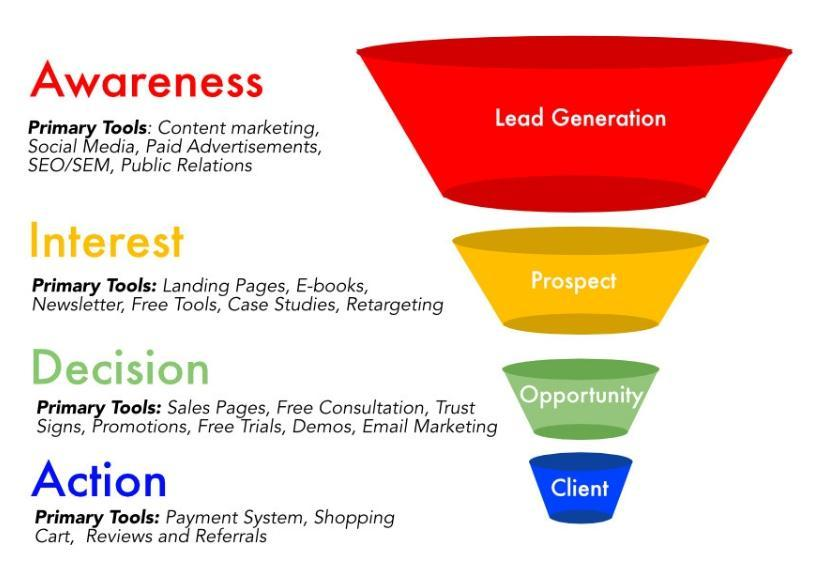
For the most part, the sales funnel is divided into the four sections depicted above: Awareness, Interest, Decision, and Action. We’ll go over each of these stages in detail in the next section.
Sometimes, though, salespeople also use the following terminology to describe the sections of the funnel: top of the funnel (TOFU), middle of the funnel (MOFU), and bottom of the funnel (BOFU). The TOFU generally aligns with the “Awareness” and “Interest” stages; the MOFU aligns with “Decision”; the BOFU aligns with “Action.”
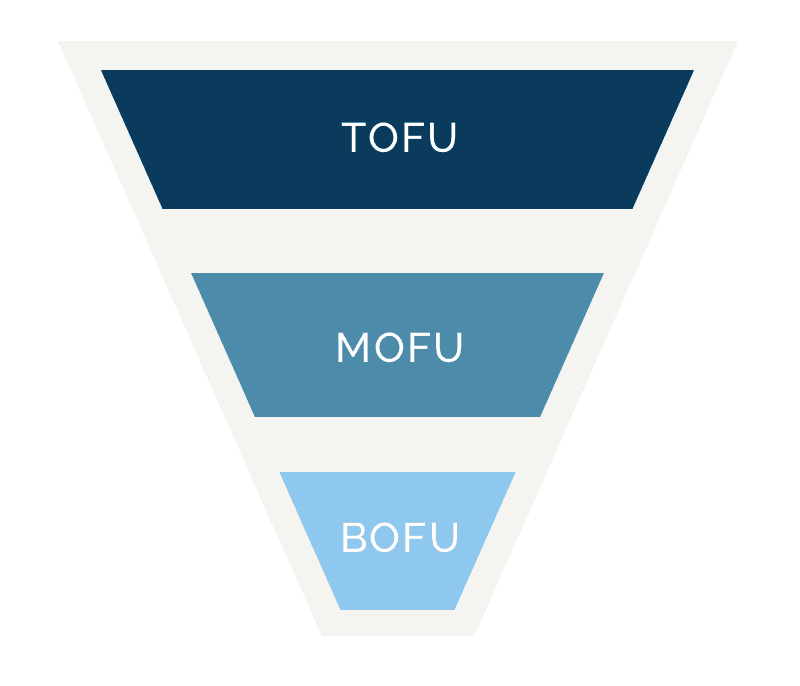
All that being said, it’s also okay to customize the sales funnel terminology or function for the unique needs of your specific organization.
Benefits of Sales Funnel Management
Although their visual representation looks quite structured and well-planned, sales funnels are virtually useless without effective sales funnel management.
Sales funnel management helps sellers and marketers:
- Strategically generate leads
- Calculate more accurate sales forecasts
- Improve conversion rates at each funnel stage
- Provide accountability for sales reps
Of course, all of these improvements ultimately translate to the most important one: increased revenue.
The Stages of Sales Funnel Management
Sales funnel management requires careful monitoring of each of the four sales funnel stages. Funnels that aren’t well-managed are prone to leaking even perfect-fit leads.
Sales funnel management allows marketers and sales reps to determine the exact bottleneck points and specific clogs that lead to lower conversion rates.
The first step in effective sales funnel management is having a clear picture of the specific stages of your funnel. For most companies, it will roughly follow the Attraction – Interest – Decision – Action framework, but remember to tweak this as necessary depending on your specific buyer’s journey.
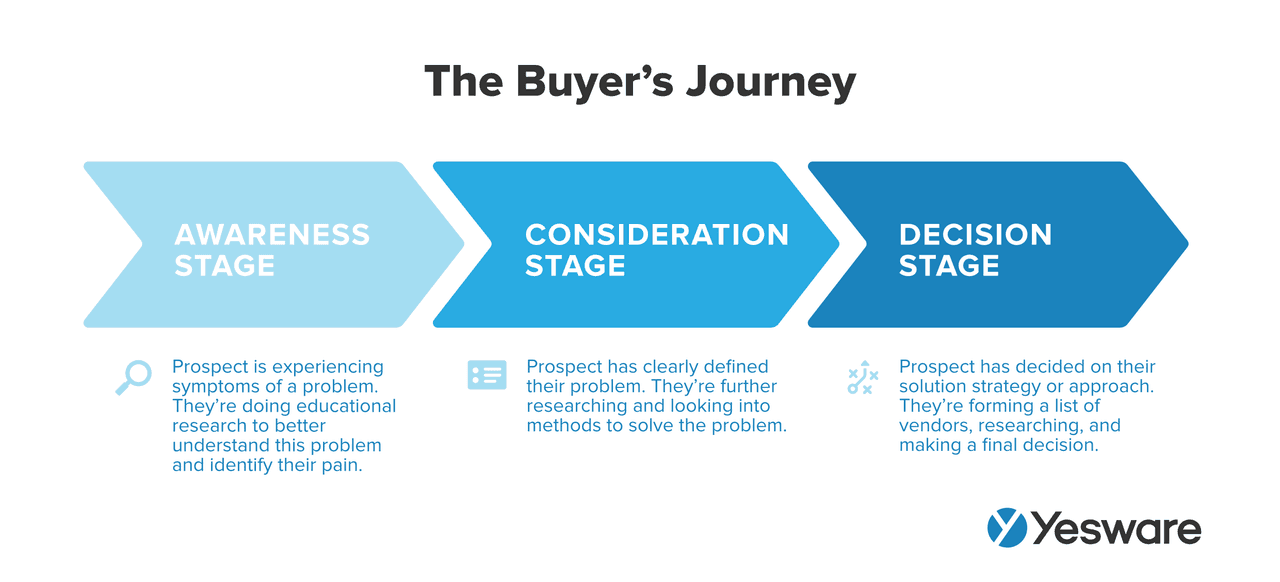
An effective sales funnel management strategy will have an optimized, automated process for converting the maximum possible number of leads through each stage.
Awareness
When a prospect is in the Awareness stage, they have just discovered your brand or product.
Your goal, as a marketer or sales rep, is to help the prospect understand exactly what your company or product does. This is not the time to push your product or make a flashy pitch; this is the “play it cool” stage of the sales funnel.
Here is where a thorough ICP and buyer personas come in really handy.
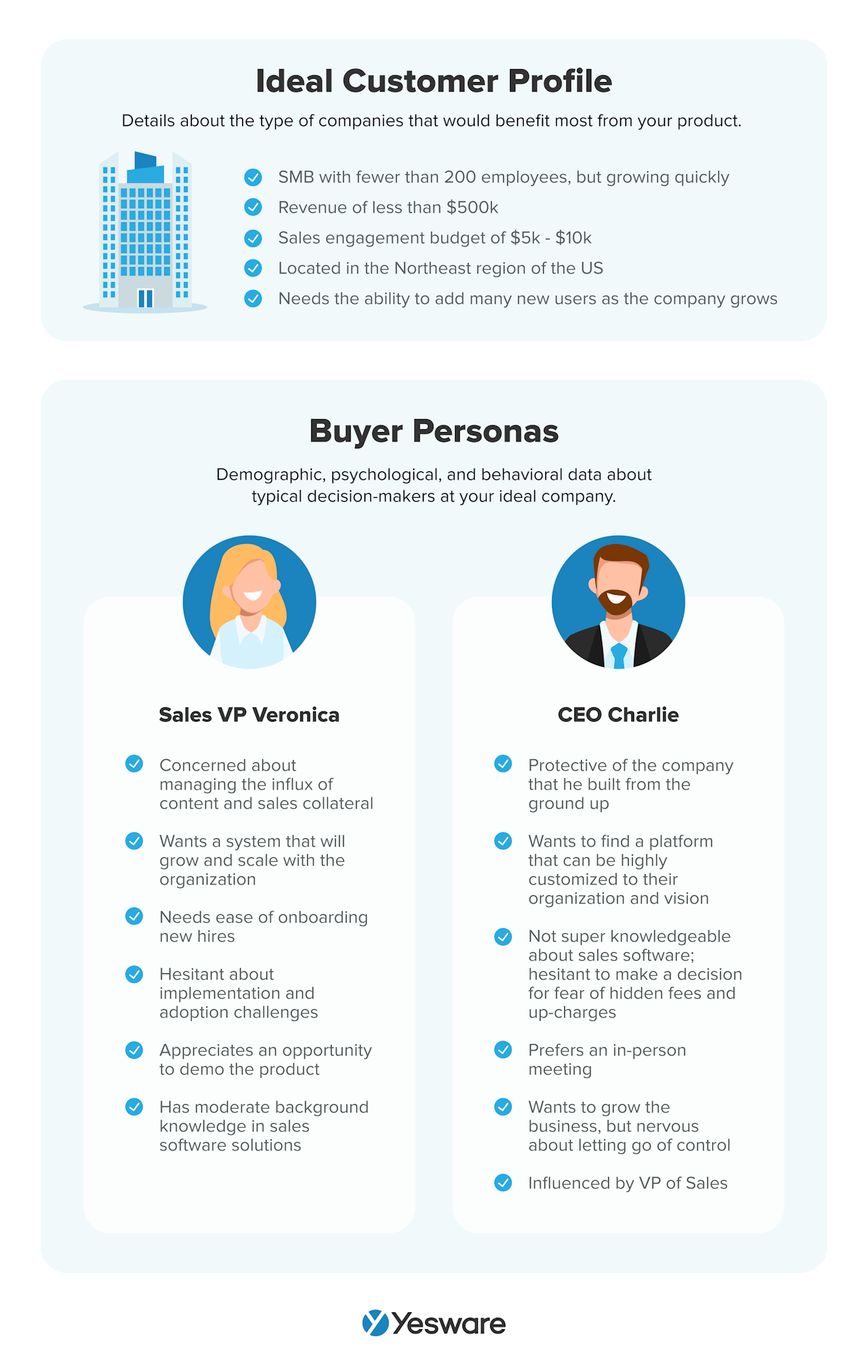 Use what you know about your ideal customer (including where they spend their time — Facebook? LinkedIn? Twitter?) to serve up interesting, helpful, and relevant content related to their pain points.
Use what you know about your ideal customer (including where they spend their time — Facebook? LinkedIn? Twitter?) to serve up interesting, helpful, and relevant content related to their pain points.
The following strategies are appropriate for the Awareness funnel stage:
- Traditional print advertising
- Blog posts
- Social media marketing
- Cold calls and emails
- Paid digital advertising
In short, the goal of the seller during the Awareness stage is to plant seeds that encourage the prospect to come back.
Interest
Prospects in the Interest stage are becoming more certain that they need to find a solution to their problem, and are ready to give your product (among others) a more serious look. You have successfully garnered their attention.
The salesperson’s goal in the Interest stage of the funnel is to learn more about the prospect’s specific goals and deepest desires. To do this, you’ll want to make every effort to get their contact information so that you can start sending them highly-targeted content.
Of course, buyers in today’s day and age are unlikely to hand over their email address to anyone who asks. Digital marketing has become so prevalent that marketing emails have gone from cutting-edge content to white-noise nuisance to buyers.
With that in mind, your lead magnet (the content you offer in exchange for contact information) needs to be sharp, extremely helpful, and motivating.
Things like long-form blog posts (think guides, manuals, or playbooks), product comparisons, and case studies are great lead magnet options.
Sellers working with prospects in this stage should measure how engaged they are. Tracking metrics like the amount of time spent reading blog posts, email open rates, click-through rates, and website visits will help you determine where to make tweaks to your strategy.
Successful conversion in the Interest stage of the funnel means the prospect has willingly shared their contact information by opting into your lead magnet offer.
Decision/Desire
In the Desire stage, prospects are really warm. But don’t take that for granted — there’s a ton of funnel leakage in this stage in sales funnels that aren’t well-managed.
Prospects in the Desire stage really like your product and are eager to find a solution to their problem.
Your job here is to make it easy for them to say yes. Content and sales collateral such as testimonials, product or subscription discounts, promotional offers, compelling case studies, and free trials can all tip the prospect over the edge to get them to “yes.”
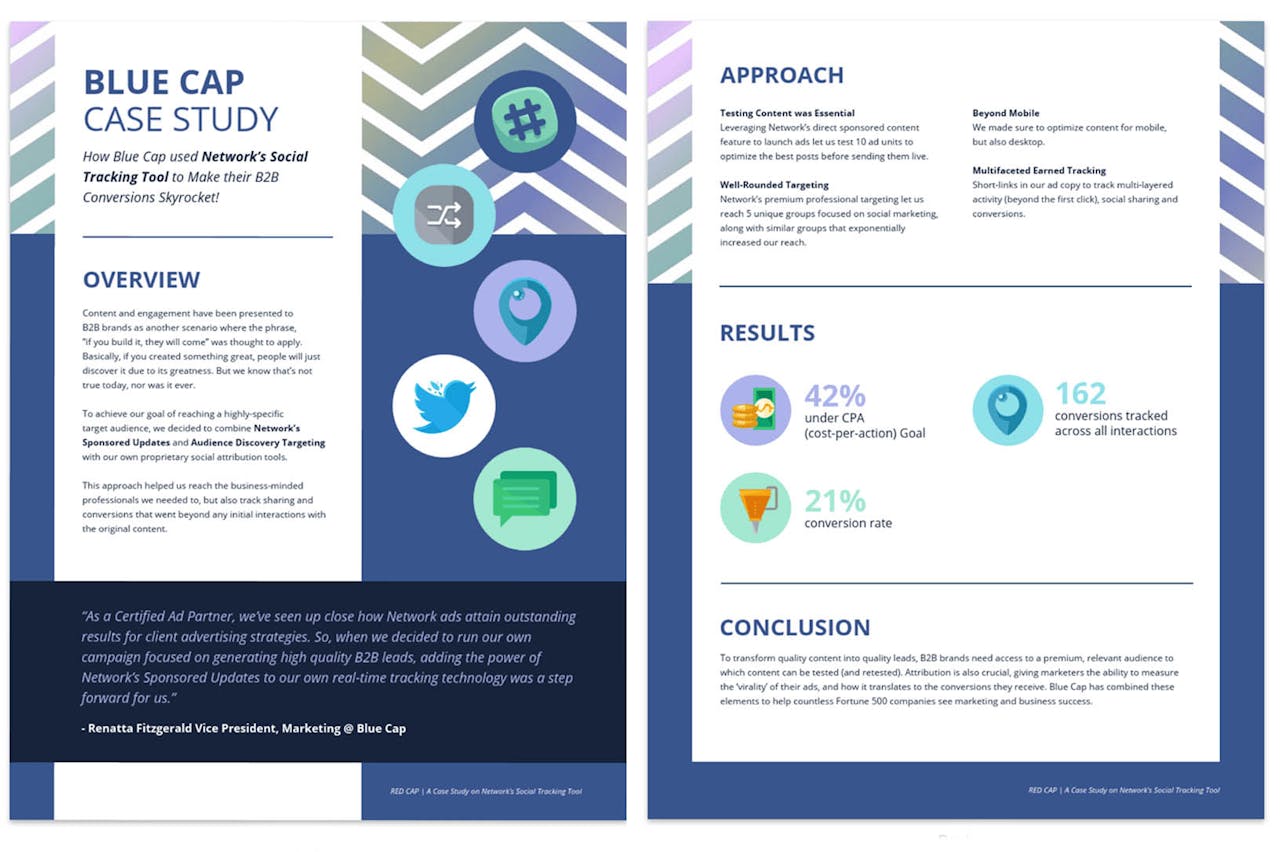
Be careful to toe the line here, though. Sellers that are too eager to close can come off as pushy, so it’s important to maintain a no-pressure approach that allows the buyer to feel in control.
Action
The Action stage is the last one in the sales funnel and is an exciting one for salespeople. It means the deal is almost done.
The prospect is ready to commit, and the seller’s job is to seal the deal and pivot their attention to a positive onboarding experience.
The biggest mistake that some sellers make in this stage is neglecting to ask directly to close the deal. Many sales reps falsely equate “It feels like a yes!” with “He signed on the dotted line.” There is a shocking amount that can go awry between almost-closed and closed-won. Make sure to ask for the close.
The Action stage is also about planning for an outstanding onboarding experience. In some organizations, this remains the responsibility of the seller. Other teams may have a designated team that specializes in onboarding and customer success. Regardless, make sure the transition and processes are seamless and, above all, helpful for the new customer.
Sales Funnel Management Fails
In general, the three biggest areas where salespeople fail to manage or mismanage their sales funnels are:
1. Abandoning the Prospect at the First “No”
It’s normal for most buyers to have at least mild objections to your proposal.
One of the best reasons to invest in sales funnel management is because it allows marketers and sellers to strategize about how to best nurture those prospects that generate a fast “no,” but who might actually come around with a bit more education.
Sales funnel management will help you learn how to identify those prospects so that you can target them with content that moves them through the funnel more quickly.
2. Failing to Follow Up
Did you know that it takes many buyers up to six follow-ups before they commit?
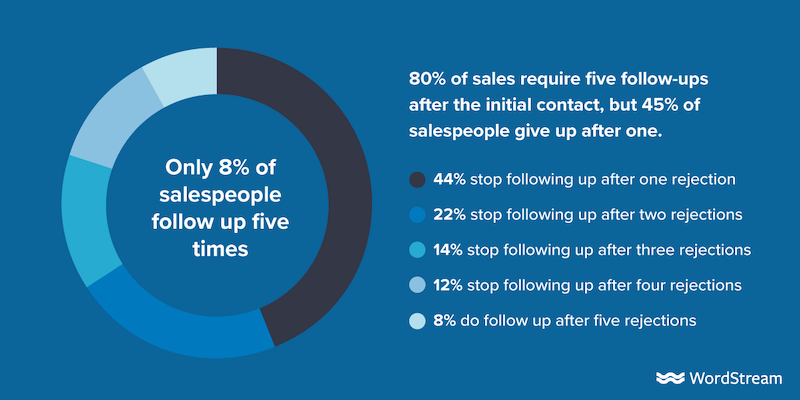
Sales funnel management automates the process of following up, so no prospect slips through the cracks. It can also help you pinpoint where in the funnel follow-ups are most effective.
Tip: Grab a follow-up email template below.
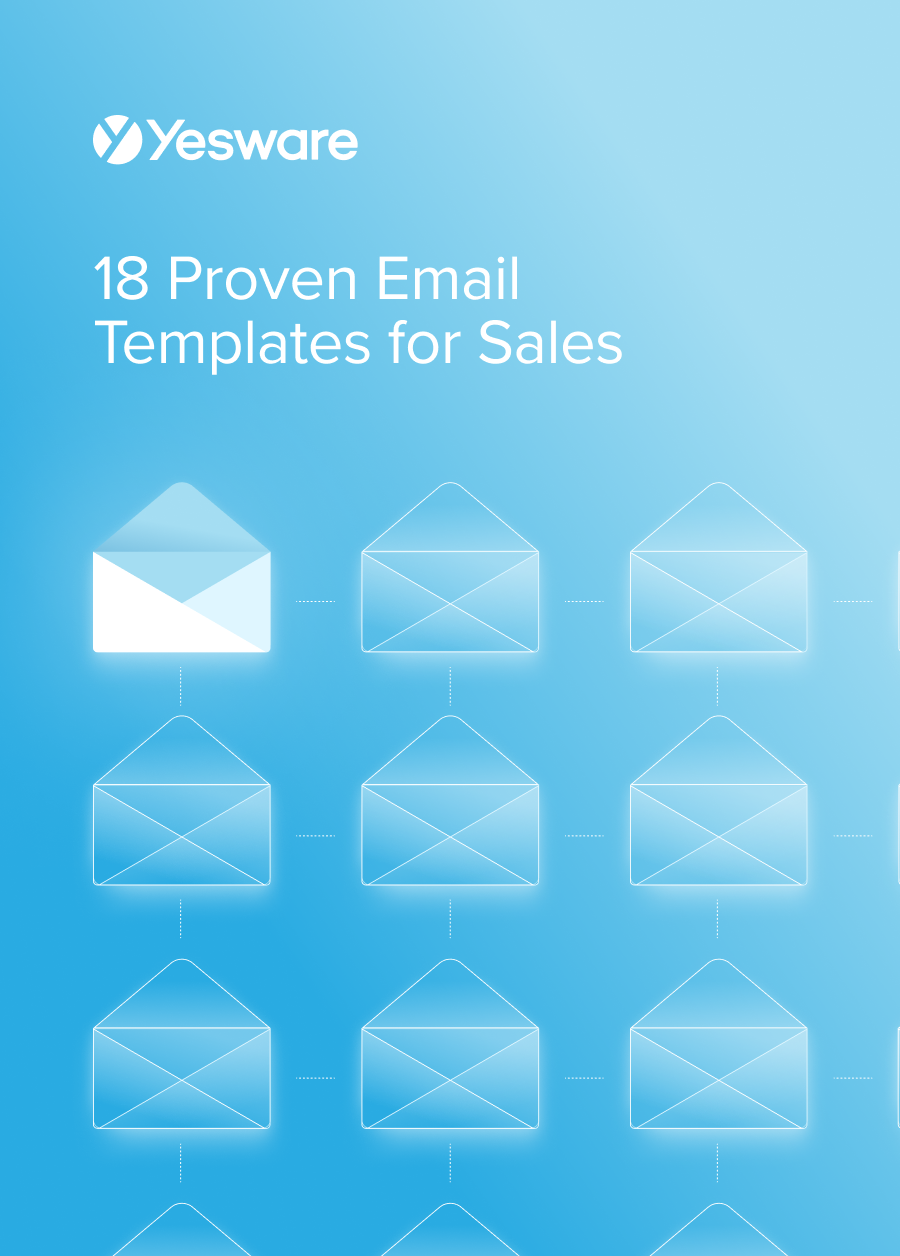 18 Proven Email Templates for SalesWinning email templates for cold outreach, follow-ups, and nurturing relationships – backed by data and real-world examples.
18 Proven Email Templates for SalesWinning email templates for cold outreach, follow-ups, and nurturing relationships – backed by data and real-world examples.
Following Up Too Slowly
In addition to how often salespeople follow up, prospects are also swayed by how quickly they do so. New leads are 9x more likely to convert if salespeople follow up in the first 5 minutes of initial contact.
Sales funnel management allows salespeople to know exactly when prospects make contact with your company — and exactly how to respond to them when they do.
Build a Sales Funnel Management Plan
With the rise in digital marketing, the traditional linear sales funnel has fallen largely by the wayside. Prospects today might enter, exit, and re-enter the funnel at any stage. That’s why it’s so important that sales and marketing teams take the time to create a streamlined sales funnel management process.
In other words, in a sales landscape that makes the task extremely complicated, sales funnel management simplifies the way salespeople are able to identify, filter, and prioritize leads.
Building a sales funnel management system requires full visibility across teams; salespeople and marketers need to closely collaborate to design a sales funnel management strategy that works for everyone.
Keep the following tips and strategies in mind as you work to build a process that meets the needs of all of your sales and sales-adjacent teams.
Train Your Team
First and foremost, it’s critically important that everyone on a revenue-adjacent team is trained in how the sales funnel operates.
This training should include information about the funnel itself, as well as how teams are expected to collect, store, and analyze data in its regard. Teams should know clearly how to generate and measure success, and how to identify and problem-solve clogs.
Be sure, too, that everyone on the team is trained the same way — regardless of position or level of experience.
Find the Right Leads
Even the most perfectly-optimized sales funnel is all but worthless if you’re pushing through poor-fit leads.
Your sales and marketing teams should foster an open-feedback loop between one another; this kind of communication will help the teams create robust, targeted ICPs and buyer personas.
Here’s an example of a feedback loop between sales and marketing:
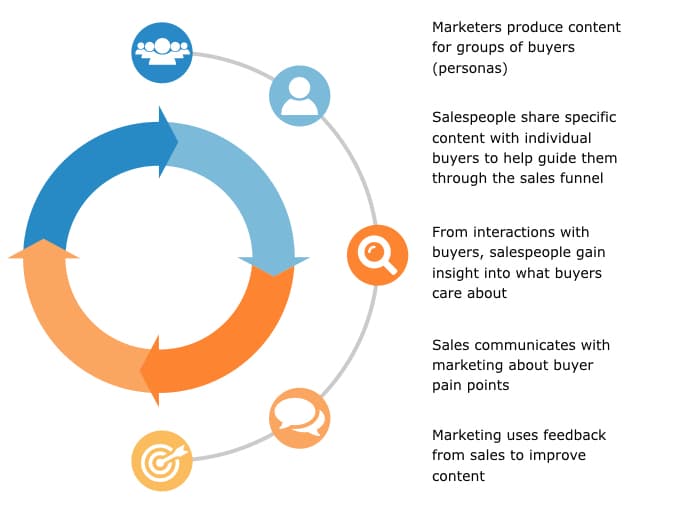
These profiles, in turn, will help marketers determine specific ways to optimize the top of the funnel so that the maximum number of good-fit leads enter it, and the minimum number of poor-fit ones are attracted to it in the first place.
Maximize Your CRM
A huge part of effective sales funnel management is automation. It’s crucial for teams that want to manage the sales funnels to have a CRM system to manage their sales pipeline.
Your CRM doesn’t need to be super fancy or powerful; even the basics go a long way in helping salespeople manage the many moving pieces of a sales funnel. More important than the software’s capabilities will be the fact that the entirety of your revenue-adjacent teams uses it to its fullest capacity.
Here is another place where training makes all the difference — everyone should know the ins and outs of the ways your CRM helps the sales funnel management process.
Make Data King
Also paramount to the success of your sales funnel management system is how well your teams collect, store, track, and analyze the data available to them.
Everyone on your teams should agree on what metrics to track, how to track them, and how to define specific terminology related to those metrics. For example, your teams should work together to define the exact moment of conversion for each sales funnel stage. You should also agree on what makes an MQL vs. an SQL. Have a common set of vocabulary on which everyone agrees.
Teams also need to make a plan — and stick to it — for reviewing the current data and updating their sales goals. The SMART goal framework can be very helpful in setting up sales reps for success when it comes to using data to drive performance.
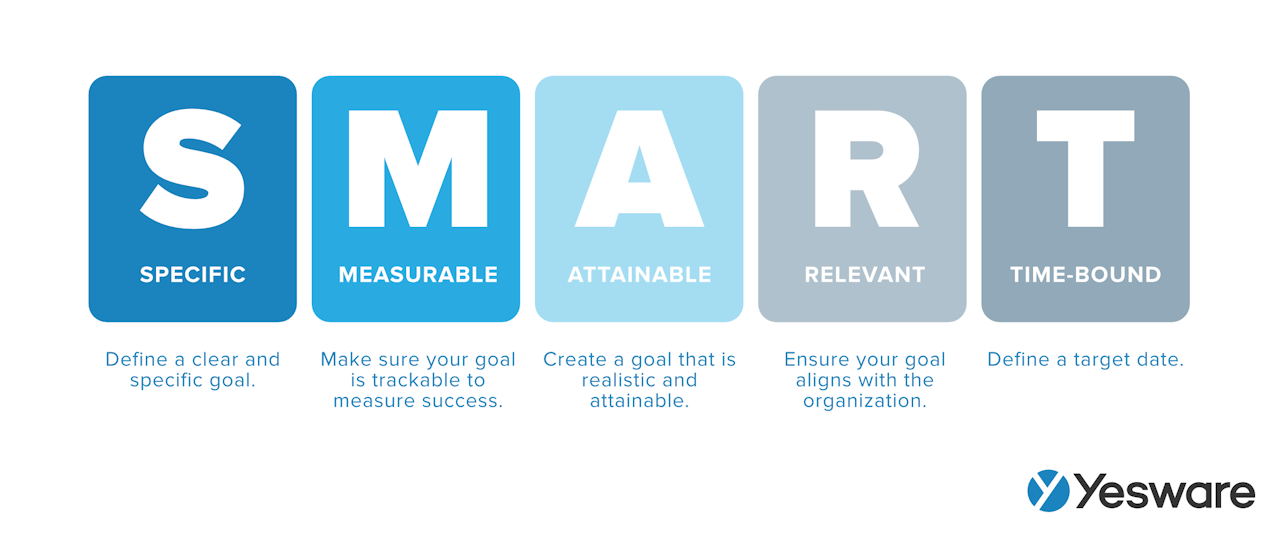
Pay Attention to the Details
Many salespeople are dismayed to learn how easily some of their sales funnel leakage can be fixed. A typo in a prospect’s email address, for example, can wreak havoc on a great lead before the conversation ever has a chance to take off.
There are other silly reasons that teams lose sales: a subpar refund policy, a spam-trigger word in a marketing email, and sloppy hand-offs between marketing and sales have all led to deals falling through before they even have a chance.
While effective sales strategy is, of course, extremely important to an organization’s success, sometimes the devil is in the details. Make sure your teams are analyzing the big and the small things in the sales funnel management process.
Sales funnel management, in short, allows salespeople to pinpoint the most and least effective components of their sales funnels so that they can adjust accordingly. Sales funnel reviews should be scheduled and completed on a regular basis so that it can be continuously optimized.
Do you have a sales funnel management process? How has it improved your sales performance?
Get sales tips and strategies delivered straight to your inbox.
Yesware will help you generate more sales right from your inbox. Try our Outlook add-on or Gmail Chrome extension for free, forever!
Related Articles
Anya Vitko
Casey O'Connor
Casey O'Connor
Sales, deal management, and communication tips for your inbox


